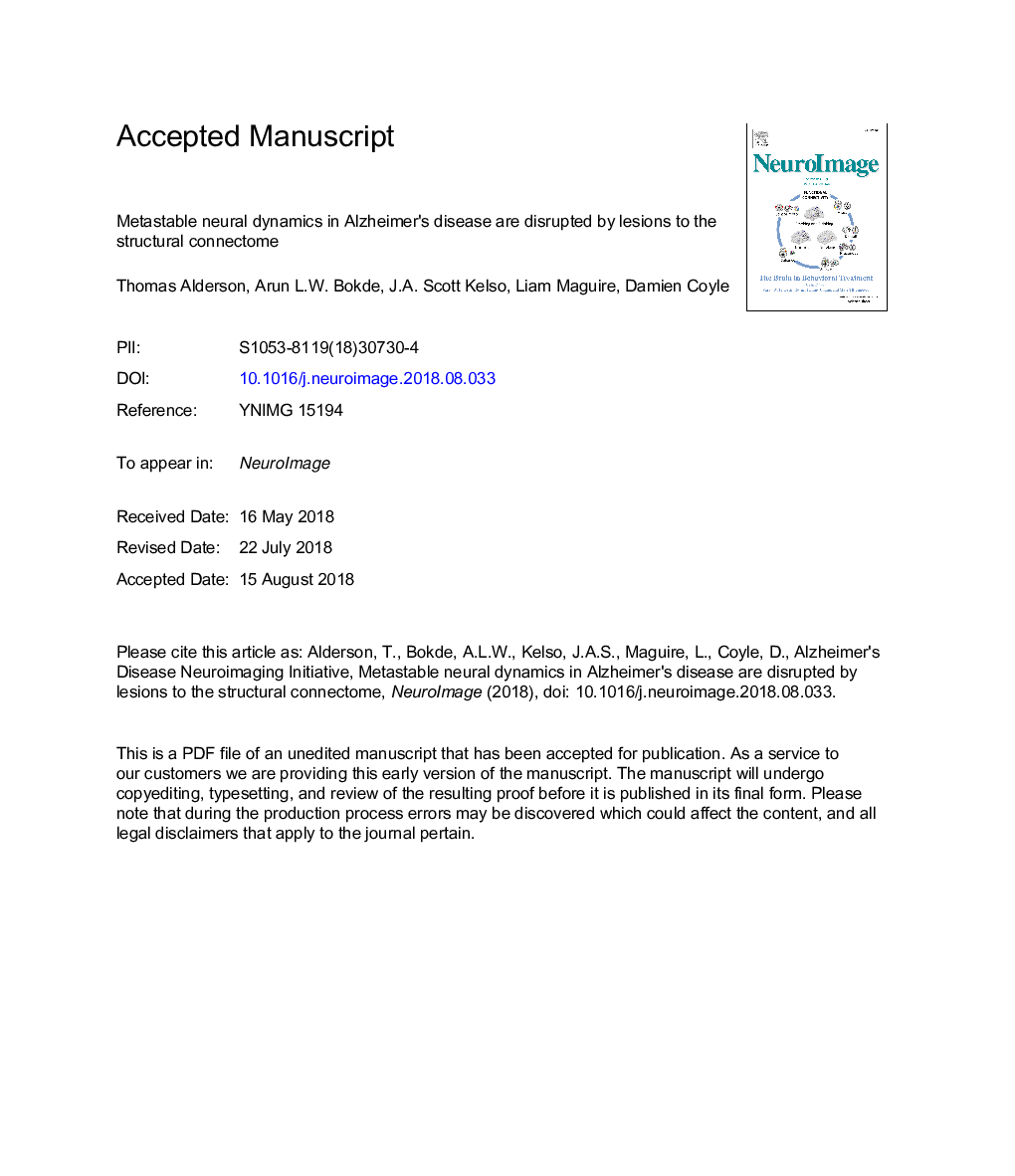| Article ID | Journal | Published Year | Pages | File Type |
|---|---|---|---|---|
| 9990820 | NeuroImage | 2018 | 61 Pages |
Abstract
Current theory suggests brain regions interact to reconcile the competing demands of integration and segregation by leveraging metastable dynamics. An emerging consensus recognises the importance of metastability in healthy neural dynamics where the transition between network states over time is dependent upon the structural connectivity between brain regions. In Alzheimer's disease (AD) - the most common form of dementia - these couplings are progressively weakened, metastability of neural dynamics are reduced and cognitive ability is impaired. Accordingly, we use a joint empirical and computational approach to reveal how behaviourally relevant changes in neural metastability are contingent on the structural integrity of the anatomical connectome. We estimate the metastability of fMRI BOLD signal in subjects from across the AD spectrum and in healthy controls and demonstrate the dissociable effects of structural disconnection on synchrony versus metastability. In addition, we reveal the critical role of metastability in general cognition by demonstrating the link between an individuals cognitive performance and their metastable neural dynamic. Finally, using whole-brain computer modelling, we demonstrate how a healthy neural dynamic is conditioned upon the topological integrity of the structural connectome. Overall, the results of our joint computational and empirical analysis suggest an important causal relationship between metastable neural dynamics, cognition, and the structural efficiency of the anatomical connectome.
Related Topics
Life Sciences
Neuroscience
Cognitive Neuroscience
Authors
Thomas H. Alderson, Arun L.W. Bokde, J.A. Scott Kelso, Liam Maguire, Damien Coyle, Alzheimer's Disease Neuroimaging Initiative Alzheimer's Disease Neuroimaging Initiative,
